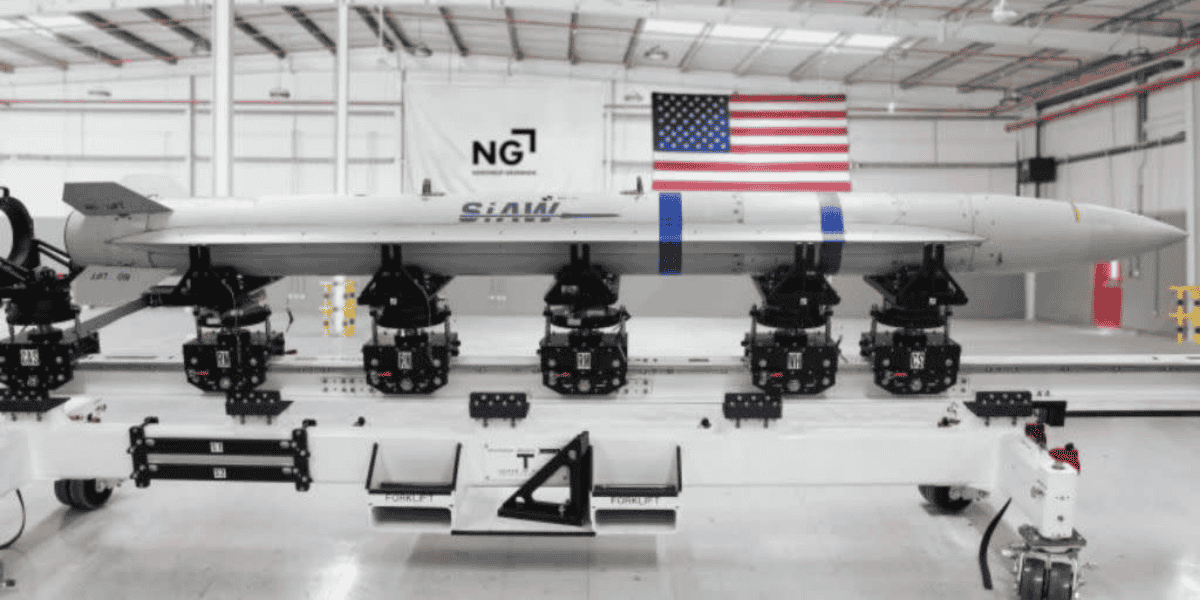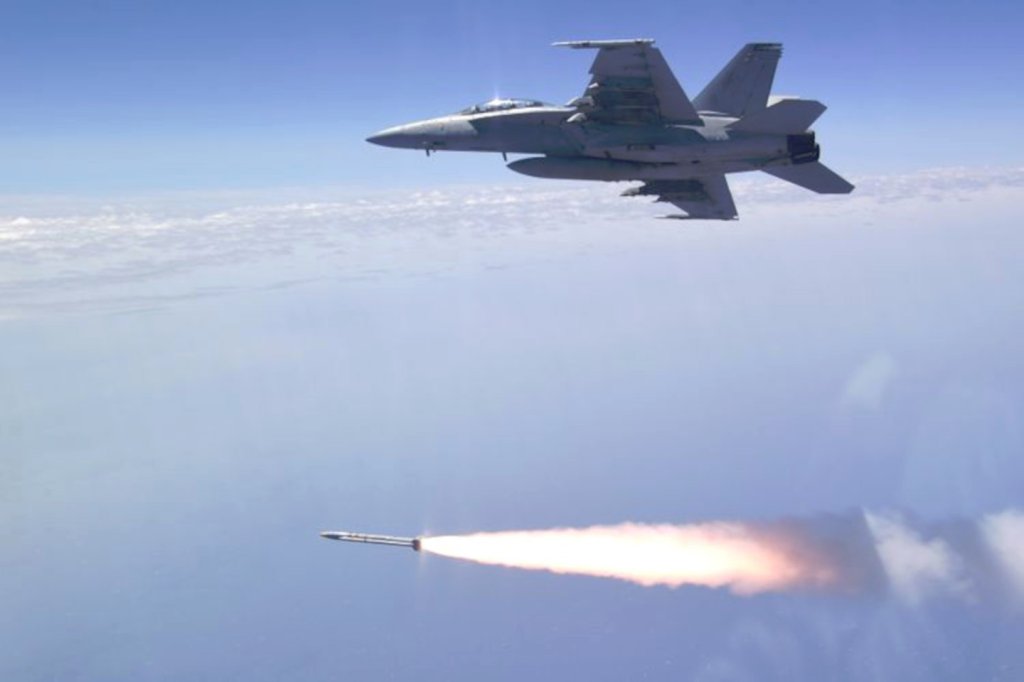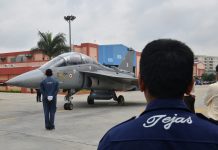Northrop Grumman Corporation has announced the delivery of the first Stand-in Attack Weapon (SiAW) test missile to the US Air Force, marking a critical step in the missile’s development.
The delivery, revealed on November 18, paves the way for upcoming flight tests of the advanced air-to-ground weapon designed to counter time-sensitive, relocatable targets within hostile anti-access/area denial (A2/AD) environments.
SiAW, derived from the AGM-88G Advanced Anti-Radiation Guided Missile-Extended Range (AARGM-ER), is a high-speed strike weapon tailored to defeat a broad spectrum of targets, including ballistic and cruise missile launchers, air defense systems, electronic warfare platforms, and even anti-satellite weapons.
With the US Air Force focused on modernizing its missile arsenal, SiAW is expected to improve strike capabilities against these critical targets.
In a statement, Northrop Grumman highlighted the purpose of this first test missile: to validate the integration of SiAW with the launch aircraft and ensure the missile can be safely carried and deployed.

This milestone is part of a larger effort to develop a weapon capable of quickly and effectively striking time-sensitive targets deep within enemy territory.
The SiAW project was awarded a US$705 million contract to Northrop Grumman in September 2023 as part of the Air Force’s broader modernization efforts. The company is working to complete platform integration and flight testing and plans to achieve rapid fielding by 2026.
Northrop Grumman is employing cutting-edge digital engineering processes to accelerate the missile’s development and ensure it meets the evolving demands of modern warfare.
While SiAW and AARGM-ER share external similarities, SiAW is an entirely new weapon system. The AARGM-ER, developed by the US Navy, has already undergone successful live-fire tests since its first launch in 2021.
However, SiAW extends the concept further, targeting air defense radars and a wider array of critical A2/AD systems.
Though details regarding the missile’s range, speed, and other performance specifications remain classified, speculation has arisen regarding its potential speed.
Earlier this year, Lockheed Martin unveiled its Mako missile, originally designed for the SiAW competition. The announcement has fueled speculation about the potential for SiAW and AARGM-ER to achieve hypersonic or near-hypersonic speeds, particularly during the terminal sprint phase.
The SiAW Program
The Stand-in Attack Weapon (SiAW) program began in 2022 with contracts awarded to Northrop Grumman, Lockheed Martin, and L3Harris. In September 2023, Northrop Grumman was chosen to continue developing the SiAW.
Northrop Grumman is tasked with developing the weapon, overseeing platform integration, and completing the flight test program to enable rapid prototyping and swift deployment.
Upon successful completion, the program will transition to a larger acquisition phase, paving the way for operational integration into platforms such as the F-35A Lightning II and potentially the B-21 Raider stealth bomber.
Along with the B-21 Raider stealth bomber, various unmanned drones could also serve as potential launch platforms for SiAW.
The Air Force has ambitious goals for the program, with an initial operational capability targeted by 2026. Plans include procuring 400 units by 2028, with a long-term goal of producing up to 3,000 missiles in the following years.

In its 2025 Fiscal Year budget request, the Air Force highlighted the system’s critical role in countering Anti-Access/Area Denial (A2/AD) environments.
According to the document, SiAW can target various threats, including theater ballistic missile launchers, land attack and anti-ship cruise missile launchers, electronic jamming systems, anti-satellite weapons, and integrated air defense systems.
The SiAW program aligns with the US military’s broader strategic objectives, particularly in addressing potential conflicts with adversaries like China.
The People’s Liberation Army has invested heavily in advanced air defense, anti-ship systems, electronic warfare tools, and space-focused capabilities to challenge US dominance.
SiAW’s ability to swiftly and effectively suppress these threats across multiple domains is viewed as vital for maintaining an operational edge in high-stakes scenarios, particularly in the Pacific theater.
Given its strategic importance, the Air Force has identified the F-35A stealth fighter as the first platform to be equipped with SiAW missiles. The F-35A’s internal weapon bays will allow the missile to be carried while maintaining the aircraft’s stealth profile.
Additionally, F-35A and F-35C variants will integrate the AGM-88G Advanced Anti-Radiation Guided Missile-Extended Range (AARGM-ER), further enhancing their ability to operate in contested environments.
The Air Force envisions SiAW as a key component of its future arsenal, which will extend beyond current platforms to include unspecified “Future Advanced Aircraft.”
As part of the broader Next Generation Air Dominance (NGAD) initiative, the service has been working on a sixth-generation crewed stealth fighter. However, the future of this program is now uncertain.
Both SiAW and the AARGM-ER are expected to provide valuable capabilities for non-stealthy platforms as well as stealthy platforms. These weapons could be employed against air defense systems and other emerging threats, even when these targets appear unexpectedly.
Depending on the missile’s range, it may be possible to launch the weapon from a safe distance, using third-party targeting data to neutralize the threat without direct engagement.
- Contact the author at ashishmichel(at)gmail.com
- Follow EurAsian Times on Google News




